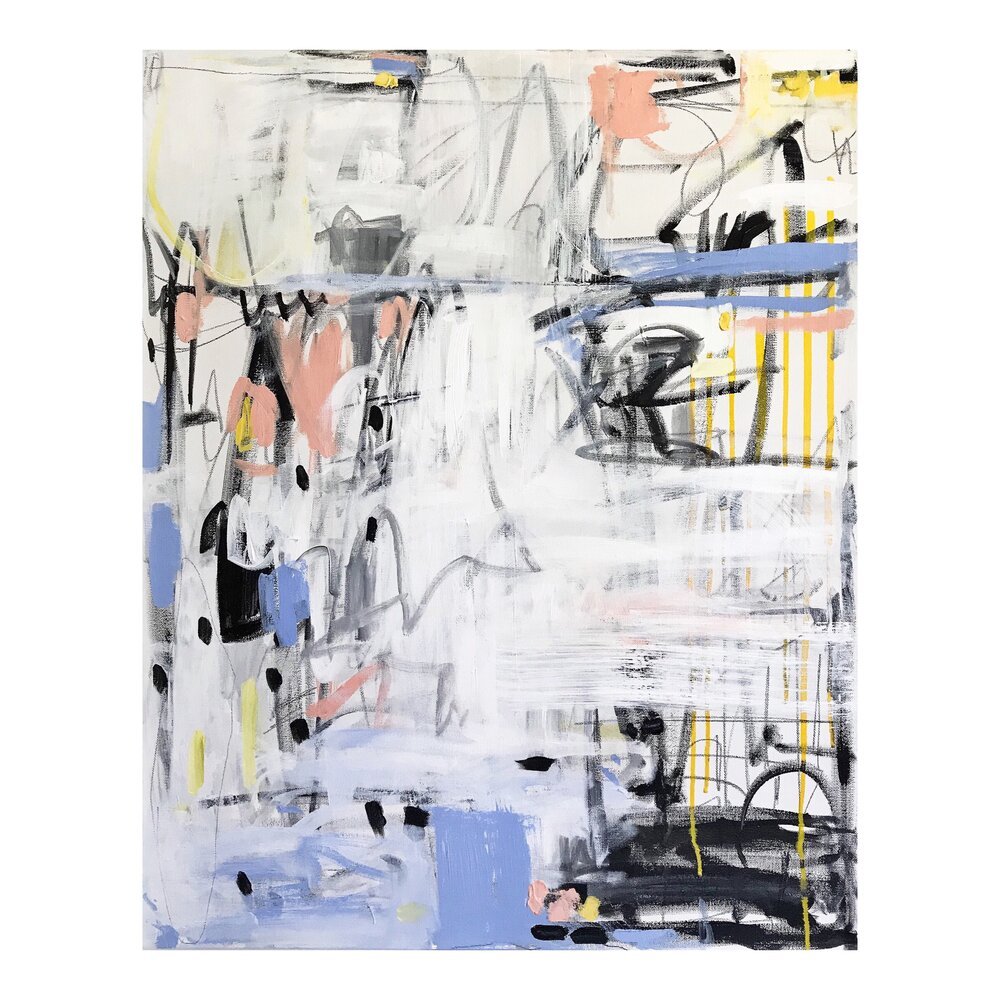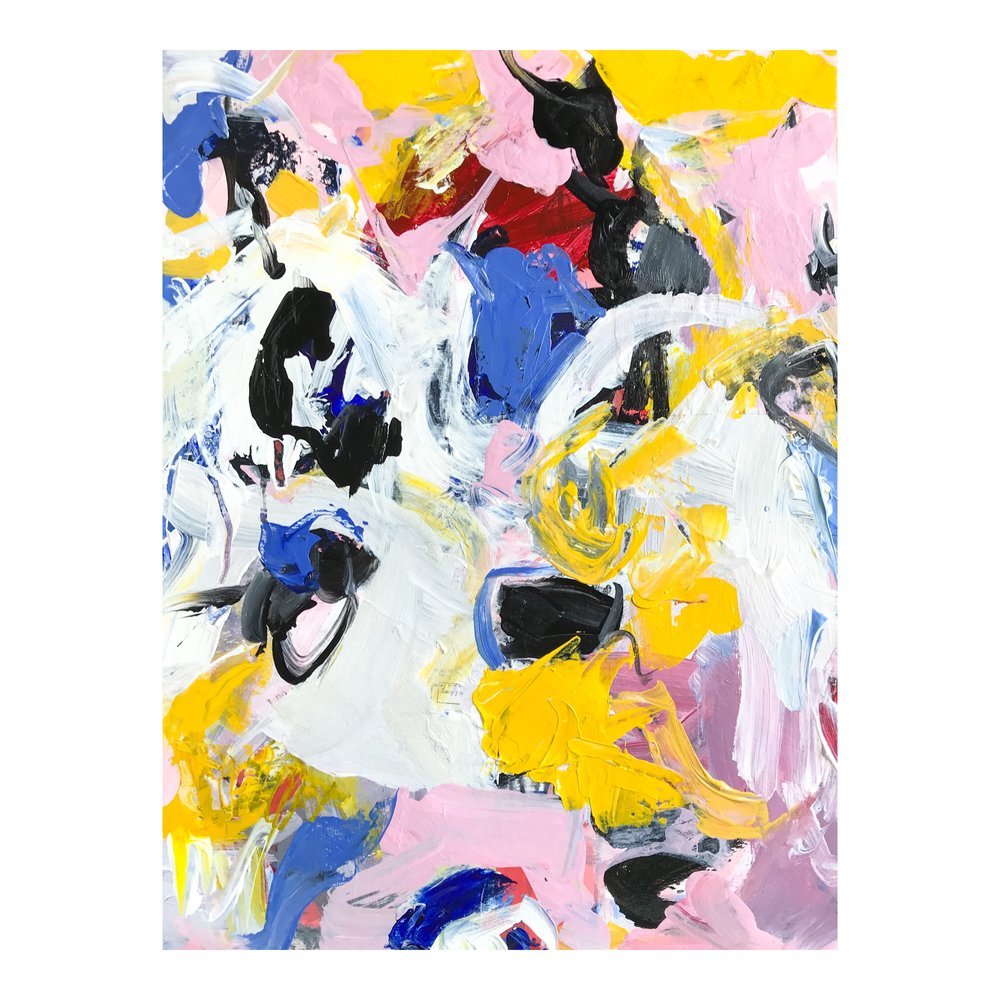An Interview With Jin Masanotti
Jin’s art practice relies on pleasure, curiosity, and therapy. Much of what drives her work is tied into stress and anxiety. It’s not about ridding herself of it. Rather, art is a tool that helps Jin to explore it, express it, and use it to help herself. Mixed media artwork gives Masanotti a safe space to explore and express her experiences and emotions in a way that is both creative and therapeutic. Jin hopes her art and process helps others to grow and thrive.
Can you tell us a little bit about you?
I’m a self-taught Korean-American Southern artist currently based in the Pacific Northwest with my husband and two young ones. I grew up in the foothills of Appalachia then lived in Atlanta for 25 years. I’ve been a creative for as long as I can remember. I always wanted to be a teacher and/or artist; a painter or writer (or both). I eventually went on to receive a BA in English. The plan was to get my graduate degrees and go on to lecture but student debt caused me to reconsider that path. Instead, I started a catering and events business with my partner. The business was fun and successful. I used a lot of creative skills to operate the company but I missed the creative life. At first, I mainly used art as a means of a therapy and found my way back to it all with mixed photography, media painting, collaging, and art journaling. Once I started to practice art regularly, I began sharing it on Instagram. This connected me to a huge world of artists and art lovers that’s been an important part of my creative journey. Presently, I keep to a near daily art practice and developing my approach to demonstrate and teach art to adults and children.
What is your artistic process and how has it evolved since you began painting?
Making is therapeutic as well as developmental for me but for anything to improve there needs to be consistent practice. As a small business owner and mother of young ones, it took me many years to develop that consistency. Working large was often frustrating because I rarely had time to work and spend energy fleshing out ideas and intentions. Working small—in particular, art journaling and collaging—helps me find consistency in developing ideas and my work. Making collage material is a big part of my process as well. I use recycled paper materials (gift bag tissue paper, old books, old paintings my kid made at preschool) but I love to make the collaging material myself and with my kids. Sometimes it’s just one colour of paint, sometimes it’s mixed media, sometimes a simple charcoal drawing or wisps of spray paint. The making, ripping, then turning it into something completely different is the magic. It also sharpens fundamentals skills (drawing, composition, colour theory, etc.) and keeps my creative engine oiled and ready. The hope is all of this practice and work translates to larger works that get better and better; to make work that I love.
You have become known for your 'Art Journals' but where did the inspiration behind this series come from?
An artist must work. It’s the only way to improve and I am quite interested in learning, improving, evolving. However, it was hard for me to find the space and time to work regularly. Art journaling and collaging, working small and fast, helps me find the time to consistently practice and, perhaps most importantly, complete works. An hour a day, even 20-30 minutes a day, is better than nothing at all. When I make larger works now, I can tell how much the journaling and collaging has helped sharpen and improve my craft. Finding time and being consistent can be hard but the outcome is often satisfying and addictive.
What does 'Abstraction' mean to you?
It is subverting what is common; summoning power with instincts, memories, and emotions; the fear and freedom of experiencing and experimenting with the unknown.
Is there one piece or project you are especially proud of?
All of my art journals are precious to me because they do so much for my craft as well my mental health. They are my therapy. They are my reminder. They are my practice. They are a look into my past—the good and bad. They are a recorder of my present. They are my guide into the future.
Your earliest memory of art?
The Creative Arts Guild in Dalton, GA was where I formed my love of the arts and learned about being a creative. From 4 to 12 years old I took art, dance, and music classes there and it enriched my life then and now. The Arts Guild is a compact but modern style concrete building—like nothing else in town. It was wondrous to me as a child. There were incredible and often large sculptures surrounding the grounds and a beautiful art gallery space I went to learn about art, music, attend exhibitions, and had many piano recitals. All of the classes were quite good and taught by accomplished talented artists. I feel quite lucky to have had that creative experience and formal art training as a child. I still use the skills I learned there today.
Who or what is your biggest artistic inspiration?
Every artwork and artist I give a heart to on Instagram! I am blown away by the gifts of so many artists everyday. Not only does the work delight me but I learn a lot from their work and how they present it.
Are there any particular artists that you are currently enjoying?
I enjoy so many contemporary artists it is hard to narrow down favorites. I love the works of Sarah Giannobile, August Noon, Brian Sindler, Natalie Dunnege, Jean-Baptiste Besançon, George Anthony Morton, Igor Lipskykh, Inga Dalrymple, Sascha Missfeldt, David Abbott. I think I could list hundreds more.
What is your favourite book or film and why?
One of my favorite books is The Old Man and the Sea. Simplistic style but anchored by immense technical depth. Perseverance and consistency even after long battles and hard defeats. I think it is an example of literary perfection.
Are you working on any projects you are particularly excited about?
I’ve been working on a new mixed media series of works on paper and canvas that take a lot of energy but the work itself has been a delight to me. The daily practice and collaging has helped my canvas work a lot and it’s exciting to feel some payout from the process.
Jin Masanotti - Instagram
Jin Masanotti - Website





